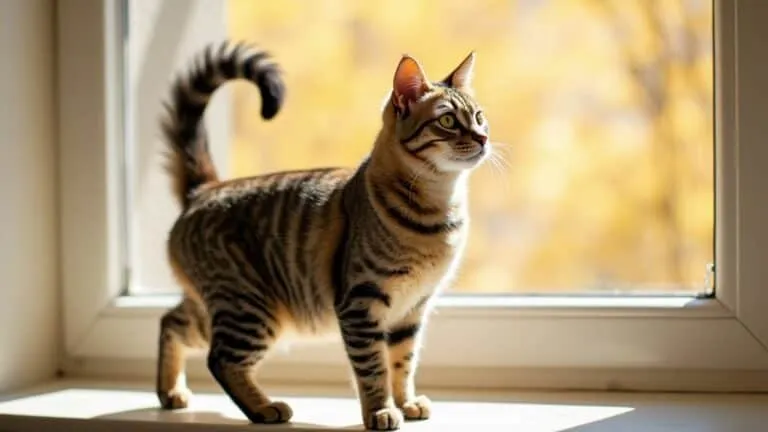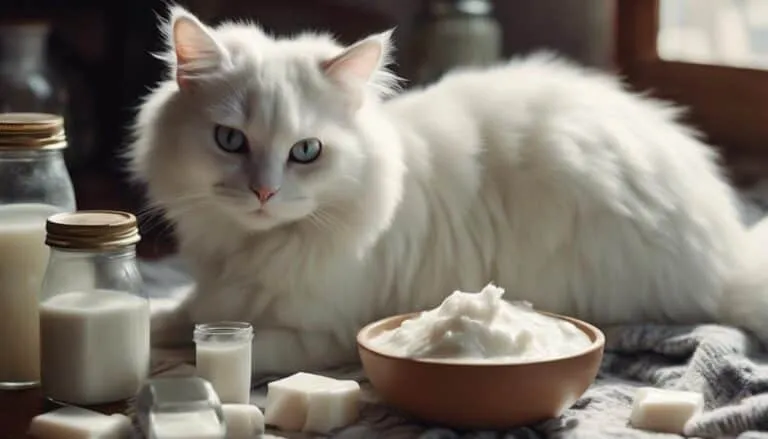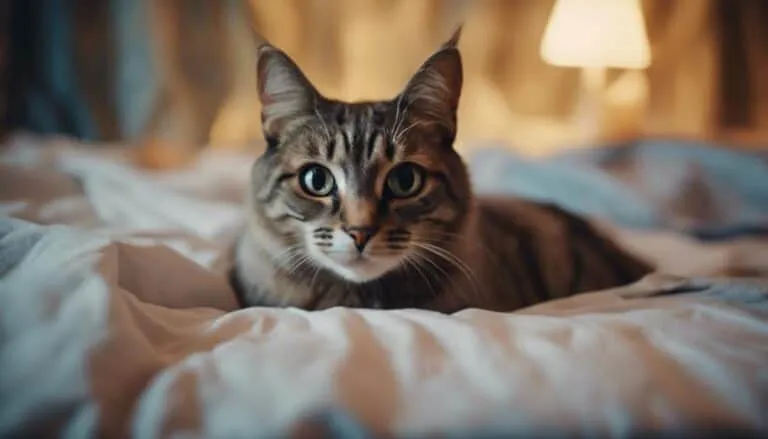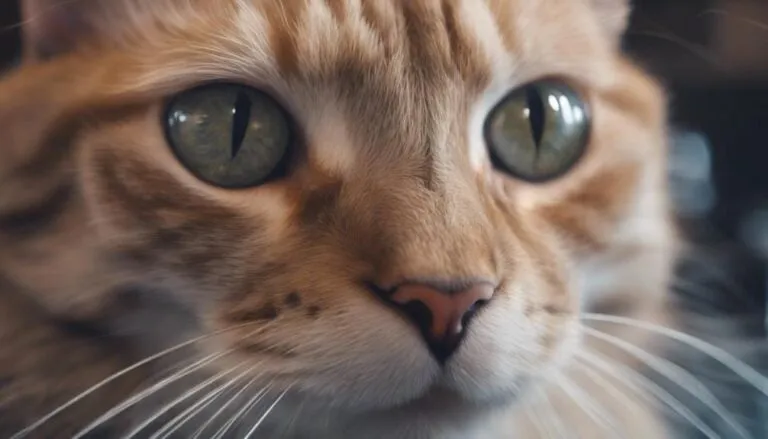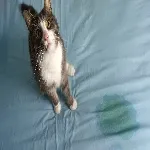The Best Fluffy Pancakes recipe you will fall in love with. Full of tips and tricks to help you make the best pancakes.

The debate between using dishwashers or litterbox liners for cleaning cat litter boxes has sparked controversy among pet owners and experts alike. As we delve into this discussion, it becomes clear that both methods have their advantages and disadvantages.
But what are the sanitary concerns associated with dishwashers? And why do plumbing problems arise when using them for litter box cleaning?
On the other hand, what benefits do litterbox liners offer, and why is manual cleaning still a viable option?
In this article, we will explore these questions and more, shedding light on the best approach for maintaining a clean and healthy environment for our feline companions.
Key Takeaways
- Using a dishwasher to clean litter boxes is not recommended due to potential sanitary concerns and plumbing problems.
- Litter box liners can provide benefits such as easier cleanup, reduced odor, and increased cleanliness.
- Cleaning litter boxes manually allows for thorough inspection of waste, immediate removal of waste, and customization of cleaning routine.
- It is important to prioritize regular cleaning and maintenance of litter boxes for the health and well-being of cats.
Sanitary Concerns With Dishwashers
When considering the use of dishwashers for cleaning litter boxes, it is important to address the sanitary concerns associated with this practice.
While dishwashers are effective in cleaning and sanitizing dishes, they are not designed for cleaning cat litter boxes. Cross-contamination between cat litter and dishes is a significant risk, as residual bacteria and parasites may remain on the dishwasher's surfaces.
Furthermore, the dishwasher may not reach high enough temperatures to kill all harmful microorganisms, and residual chemicals from cleaning agents could be harmful to cats. Additionally, scratches on dishes from cat litter particles can harbor bacteria, potentially compromising the cleanliness of the dishes.
Plumbing Problems With Dishwashers
To further explore the drawbacks of using dishwashers for cleaning litter boxes, it is important to address the potential plumbing problems that can arise from this practice.
One significant concern is the use of clay litter, which can be detrimental to plumbing systems. Clay litter tends to clump when wet, posing a risk of clogging the dishwasher's drain and accumulating in its filters.
Additionally, the abrasive nature of litter particles can cause damage to the dishwasher's components over time.
Another issue is the increased risk of dishwasher breakdown when subjected to the heavy load and constant exposure to cat litter. This can lead to costly repairs or the need for a replacement dishwasher.
Considering these potential plumbing problems, it is advisable to explore alternative methods for cleaning litter boxes to maintain both the plumbing system's integrity and the well-being of the household.
Benefits of Using a Litter Box Liner
Using a litter box liner can provide several benefits for cat owners seeking a convenient and hygienic solution for maintaining a clean litter box. Here are four advantages of using a litter box liner:
- Effectiveness: Litter box liners create a barrier between the litter and the box, preventing it from sticking and making cleanup easier and quicker. They also help to reduce odor and prolong the life of the litter box.
- Convenience: With a litter box liner, cat owners can simply remove the liner and dispose of the waste, eliminating the need for extensive cleaning. This saves time and effort.
- Hygiene: Litter box liners promote cleanliness by preventing litter particles from accumulating in the box and making it easier to maintain a sanitary environment for both the cat and the owner.
- Eco-friendliness: Some liners are biodegradable or eco-friendly, allowing cat owners to choose a more sustainable option for their litter box maintenance.
Advantages of Cleaning Manually
Cleaning the litter box manually offers several advantages for cat owners seeking a more hands-on approach to maintaining a clean and hygienic environment for their feline companions. One of the key advantages of manual cleaning is the ability to customize your cleaning routine. By manually scooping and cleaning the litter box, you have the flexibility to clean it as often as needed, based on your cat's habits and preferences.
This allows you to maintain a fresh and odor-free litter box, promoting your cat's comfort and well-being. Additionally, manual cleaning enables you to thoroughly inspect your cat's waste for any potential health concerns. By immediately removing waste, you can reduce the risk of odor and potential health risks.
Furthermore, manual cleaning allows you to monitor the condition of the litter box and detect any issues, such as the need for a litter change or the presence of parasites. Overall, manual cleaning provides a more personalized and hands-on approach to maintaining a clean litter box for your beloved feline companion.
Closing Thoughts on Cleaning Approaches
In conclusion, when it comes to choosing the best approach for cleaning litter boxes, it is important to carefully consider the individual preferences and circumstances of both the cat owner and their feline companion. Here are some closing thoughts on cleaning approaches:
- Environmental impact: It is essential to consider the environmental impact of the chosen cleaning method. Manual cleaning allows for more control over waste disposal and the use of eco-friendly products, whereas using a dishwasher may consume excessive water and contribute to waste.
- Cat behavior: Cats have a natural preference for clean litter boxes. Regular manual cleaning ensures a fresh and inviting environment for your feline friend, promoting their comfort and well-being.
- Dishwasher limitations: Dishwashers are not designed to clean cat litter boxes and may pose sanitary concerns. They may not reach high enough temperatures to kill all bacteria and parasites, and residual chemicals from cleaning agents could be harmful to cats.
- Litter box liners: While litter box liners can be a helpful tool in reducing the need for extensive cleaning, they should not replace regular manual cleaning. Liners can help with quick cleanup, odor reduction, and prolonging the life of the litter box, but they should be used in conjunction with proper maintenance.
Environmental Impact of Cleaning Methods
Considering the impact of different cleaning methods is crucial when it comes to maintaining a clean litter box while also minimizing the environmental footprint. Dishwashers may not be the most environmentally friendly option for cleaning litter boxes. The environmental impact of dishwashers includes excessive water usage and potential flooding, as well as the potential for damage to dishwasher components from abrasive litter.
Furthermore, the dishwasher may not reach high enough temperatures to kill all bacteria and parasites, and residual chemicals from cleaning agents could be harmful to cats.
On the other hand, using a litter box liner can be a more eco-friendly choice. Some liners are biodegradable or eco-friendly, reducing the waste generated from traditional cleaning methods. It is also worth considering the comparison of litter box liner materials in terms of their environmental impact.
Cat Preference for Clean Litter Boxes
Maintaining a clean litter box is essential for cat owners, as cats have a natural preference for using a clean and odor-free environment. Understanding cat behavior and litter box preferences can help ensure that the litter box is kept to their liking.
Here are four key points to consider:
- Frequency: Cats prefer a clean litter box and may avoid using it if it is dirty or contains waste. Regular scooping and cleaning are necessary to keep the litter box fresh and inviting.
- Odor control: Cats have a sensitive sense of smell and may be deterred by strong odors. Using odor-absorbing litter or adding baking soda can help minimize unpleasant smells and maintain a clean litter box environment.
- Litter type: Cats may have preferences for certain litter textures or materials. Experimenting with different options can help identify the litter that your cat finds most comfortable and appealing.
- Location: Cats appreciate privacy when using the litter box. Placing it in a quiet and accessible area can help them feel more comfortable and encourage consistent litter box usage.
Dishwashers Not Suitable for Litter Box Cleaning
To ensure the cleanliness and hygiene of a cat's litter box, it is important to consider alternative cleaning methods, as dishwashers are not suitable for this task. Dishwashers are not designed to handle the cleaning of litter boxes, and using them for this purpose can pose several risks.
Firstly, there is a potential for cross-contamination between the cat litter and dishes, compromising the sanitation of both. Additionally, dishwashers may not reach high enough temperatures to effectively kill all bacteria and parasites present in the litter.
Chemical residues from cleaning agents used in dishwashers could also be harmful to cats. Scratches on dishes caused by cat litter particles can harbor bacteria, further compromising cleanliness.
Therefore, it is advisable to explore other cleaning methods, such as manual cleaning or using litterbox liners, to ensure the proper hygiene of a cat's litter box.
Importance of Regular Cleaning and Maintenance
Regular cleaning and maintenance of a cat's litter box is essential for ensuring a clean and healthy environment for both the cat and its owner. Neglecting to clean the litter box regularly can lead to several negative consequences, including the buildup of waste, unpleasant odors, and potential health risks for both the cat and the owner.
Here are four reasons why regular maintenance is important:
- Prevents bacterial growth: Regular cleaning helps prevent the growth of harmful bacteria that can cause infections in cats and humans alike.
- Reduces odor: Regular scooping and cleaning of the litter box helps to minimize unpleasant odors in the home.
- Promotes cat health: Regular maintenance allows for the early detection of health issues through the observation of changes in the cat's waste.
- Maintains litter box condition: Regular cleaning helps to prolong the life of the litter box and ensures that it remains a comfortable and inviting space for the cat to use.
Choosing the Right Cleaning Method
When it comes to choosing the right method for cleaning a litter box, it is important to consider factors such as sanitation, convenience, and the overall well-being of both the cat and its owner.
Cat owners' preferences for cleaning methods may vary, but there are several factors to consider when choosing a cleaning method.
Firstly, sanitation is crucial to maintain a clean and hygienic environment for the cat.
Secondly, convenience plays a significant role, as some owners may prefer methods that are quick and easy to implement.
Lastly, the well-being of both the cat and its owner should be taken into account, ensuring that the chosen cleaning method is safe and comfortable for both parties.
Frequently Asked Questions
Can I Use My Dishwasher to Clean Other Pet-Related Items, Such as Pet Bowls or Toys?
Alternative cleaning methods for pet bowls and toys include handwashing with hot, soapy water or using dishwasher safe products. Benefits of using dishwasher safe pet products include convenience, thorough cleaning, and the assurance of eliminating harmful bacteria.
Are There Any Alternative Methods for Cleaning Litter Boxes That Are More Environmentally Friendly?
Alternative methods for cleaning litter boxes that are more environmentally friendly include using biodegradable litter, such as recycled paper or wood pellets, and composting the waste. Additionally, manual scooping and cleaning with eco-friendly cleaning agents can reduce environmental impact.
How Often Should I Clean My Cat's Litter Box?
Litter box maintenance is crucial for preventing odor and ensuring your cat's health. It is recommended to clean the litter box at least once a day, scooping out waste and clumps, and replacing the litter regularly.
Can I Use a Regular Trash Bag as a Liner for My Litter Box?
Using a regular trash bag as a liner for a litter box has pros and cons. Benefits include easier cleanup and odor reduction, but drawbacks include potential tearing and leakage. It is not recommended to clean pet items in a dishwasher due to sanitary concerns and possible damage to the dishwasher.
What Are Some Signs That My Cat's Litter Box Needs to Be Cleaned or Replaced?
Signs that a cat's litter box needs cleaning or replacement include strong odor, visible waste buildup, and reluctance to use the box. Alternative methods for cleaning include regular scooping, manual washing, or using litter box liners.
Conclusion
In conclusion, the debate between using dishwashers and litter box liners for cleaning cat litter boxes is a contentious one. Both methods have their pros and cons, and the choice ultimately depends on individual preferences and circumstances.
It is important to consider factors such as sanitation, plumbing problems, and environmental impact when making this decision.
Regardless of the chosen method, regular cleaning and maintenance are crucial for the health and well-being of our feline companions. As the saying goes, 'Cleanliness is next to godliness.'

